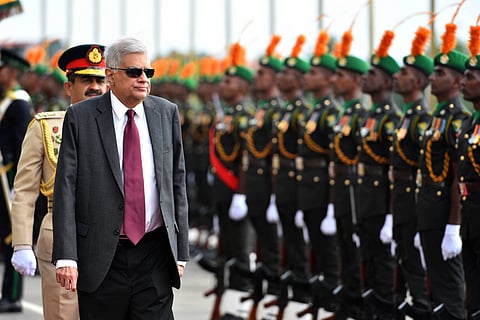Sri Lanka continues to militarise the state, despite the Rajapaksas’ fall
A young man from the North, arrested and detained several times for many years under the draconian Prevention of Terrorism Act (PTA) and finally discharged from all cases, continues to receive visits from military intelligence officials, who coerce him to work as an informant for them. A mother of a disappeared person attending the 18 May memorial in Mullaitivu for those killed at the end of Sri Lanka's civil war receives non-stop phone calls from an officer of the Criminal Investigation Department, who wants to know whether she is attending the event. A politician holding a meeting in Jaffna on the destruction of a Hindu temple and construction of a Buddhist temple in its place engages in an altercation with police intelligence officers who surveil the meeting, refuse to show identification to prove they are police, and then run away. The politician and members of his party are arrested for obstructing the police officers from performing their duty. While all these incidents happened in 2023, such occurrences are not new. The octopus-like security apparatus that grew during Mahinda Rajapaksa's tenure as president of Sri Lanka, and the resultant surveillance and attempts to curtail the rights of local populations in extra-legal ways, has been part of the reality of the people living in the conflict-affected North and East of Sri Lanka since the end of the war in 2009.
Gotabaya Rajapaksa, Mahinda's brother and a former army officer, who was also the secretary of the ministry of defence at the end of the war, led the post-war militarisation drive in these regions. It appeared to have three aims. One was to reward the military for defeating the separatist Liberation Tigers of Tamil Eelam (LTTE) by giving it increased space and resources, as well as power to influence governance. The second was, through the dispensation of patronage, to ensure military loyalty and military protection for the Rajapaksas. And, finally, the aim was also to curtail civil activism, political activity and dissent, particularly in the North and East.

